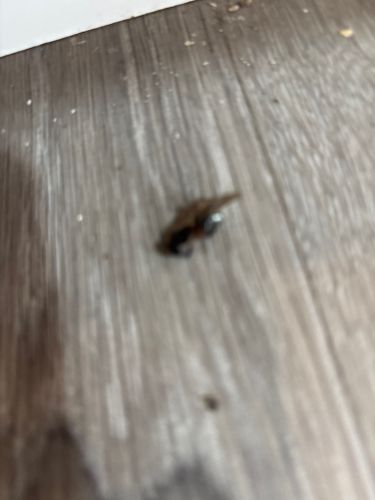Cockroach (likely American Cockroach or similar large species)
Scientific Name: Periplaneta americana (for American Cockroach, or another common urban cockroach species if identification is less certain due to image quality)
Order & Family: Order: Blattodea, Family: Blattidae (or other cockroach families)
Size: 25-50 mm (1-2 inches) for adult American Cockroaches, but can vary by species (range given for commonly large infesting species).

Natural Habitat
Found in warm, moist, and dark environments, often indoors in kitchens, bathrooms, basements, wall voids, and sewers. Outdoors, they can be found in damp areas like leaf litter, under rocks, and in drains. They are highly adaptable to human environments.
Diet & Feeding
Omnivorous scavengers, feeding on a wide variety of organic matter, including food scraps, decaying matter, sweets, starches, fats, meat products, pet food, and even non-food items like paper, fabric, and glue.
Behavior Patterns
Adult cockroaches are primarily nocturnal, hiding in cracks and crevices during the day and emerging at night to forage. They are very fast runners and can squeeze into tiny spaces. They are known for their rapid reproduction. Nymphs (immature cockroaches) look like smaller versions of the adults.
Risks & Benefits
Potential risks: Cockroaches are considered pests. They can spread pathogens (bacteria, viruses, fungi) from contaminated areas to food preparation surfaces and food, potentially causing food poisoning, dysentery, and other illnesses. Their droppings and shed skins can trigger allergic reactions and asthma in susceptible individuals. They contaminate food and surfaces. Benefits: In natural ecosystems, some species play a role as decomposers, breaking down organic matter.
Identified on: 8/22/2025